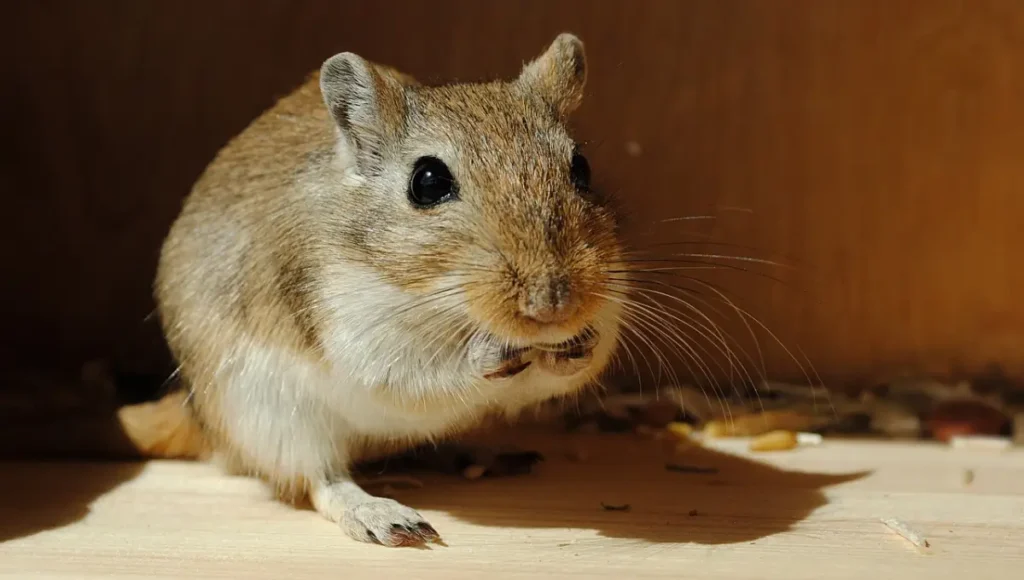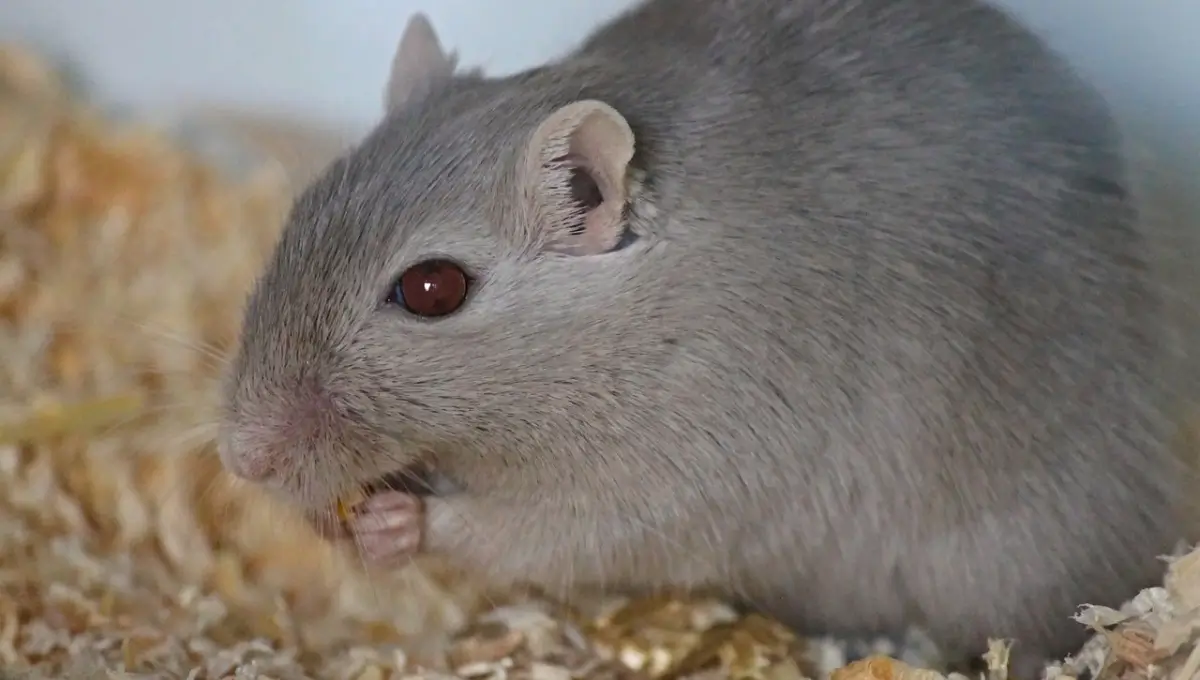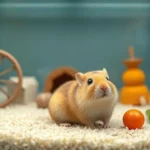Gerbils, like all living creatures, go through various stages of growth and aging. Knowing your gerbil’s age is not just a matter of curiosity; it’s essential for tailoring their diet, habitat, and care to their specific life stage.
Young gerbils have different nutritional needs than adults, and older gerbils may require more attention to their health. This guide will walk you through the key indicators of a gerbil’s age, from the early days of fluffy infancy to the golden years of gerbil retirement.
Understanding Gerbil Development Stages
Early Life
From birth to weaning, gerbils undergo rapid changes. Newborn gerbils are tiny, hairless, and entirely dependent on their mother. In these early days, their eyes and ears are closed, and they spend most of their time nestled with their siblings for warmth. By closely observing these physical and behavioral signs, you can estimate a gerbil’s age in this tender stage of life.
Juvenile Stage
As gerbils transition from infancy to the juvenile stage, they become more independent. This period, from weaning to adulthood, is marked by significant growth. Gerbils develop a full coat of fur, their eyes and ears open, and they begin to explore their surroundings with youthful curiosity.
Key milestones include the development of distinct coloration and the ability to eat solid food. Juvenile gerbils are playful and energetic, often seen scurrying around and digging with enthusiasm.
Adulthood
Reaching adulthood around three to four months, gerbils display a full body of fur and the less-rounded heads characteristic of mature individuals. Adult gerbils are more measured in their behavior compared to their juvenile counterparts.
They have established social hierarchies and exhibit complex behaviors such as burrowing and nesting. At this stage, gerbils are fully grown, making it challenging to determine their exact age without prior knowledge of their birth date.
Signs of Aging in Gerbils
As gerbils age, they show signs that can help you estimate their stage in life. Physical changes are the most noticeable. Older gerbils may experience thinning fur or changes in fur color. Weight fluctuations are common, with some gerbils gaining weight due to decreased activity levels, while others may lose weight due to health issues.
Behavioral changes also offer clues to a gerbil’s age. Older gerbils tend to be less active and may spend more time sleeping. They might interact less with their cage mates and show less interest in their environment. It’s essential to monitor these changes closely, as they can also indicate health problems.
Health issues associated with aging, such as decreased mobility, dental problems, and susceptibility to diseases, become more prevalent. Regular veterinary check-ups are crucial to manage these age-related health concerns and ensure your gerbil enjoys a comfortable and happy old age.
Understanding the age of your gerbil is key to providing them with a fulfilling life. By recognizing the signs of each life stage, from the playful days of youth to the serene calm of old age, you can adapt your care to meet their changing needs. Stay tuned for more insights on estimating your gerbil’s age and ensuring they thrive at every stage of their life.
Estimating the Age of Your Gerbil: Techniques and Tips

Gerbils are delightful companions that bring joy and entertainment to our lives. As they grow and age, their needs change, making it essential for pet owners to understand how to estimate their gerbil’s age accurately.
This knowledge ensures that your furry friend receives the care and attention they deserve at every stage of their life. Let’s explore some effective techniques for determining the age of your gerbil and answer some frequently asked questions about gerbil care.
Also read: How Many Gerbils Can Live in One Cage?
Techniques for Estimating Age
Visual Inspection
One of the first steps in estimating your gerbil’s age is through visual inspection. Young gerbils have a distinct appearance compared to their adult counterparts. Here are a few characteristics to look out for:
- Fur Density and Color: Newborn gerbils are born hairless, and as they grow, their fur begins to develop. By around four weeks, they should have a thick, full coat. The color of their fur can also change as they transition from adolescence to adulthood.
- Eye and Ear Development: Gerbil pups are born with their eyes and ears closed. These typically open within the first three weeks. If you notice a gerbil with its eyes still closed, it’s likely under three weeks old.
- Size and Weight Comparison: Adult gerbils reach their full size around three to four months of age. By comparing your gerbil to standard size and weight charts, you can get a rough estimate of its age.
Behavioral Observations
Behavior can also be a significant indicator of age:
- Activity Levels: Younger gerbils are generally more active and playful. If your gerbil is showing signs of decreased activity, it might be entering its senior years.
- Social Interactions and Mating Behavior: Adult gerbils exhibit more complex social behaviors and are capable of breeding. Observing how your gerbil interacts with others can provide clues to its age.
FAQs
How can I tell if my gerbil is too young to be separated from its mother?
Gerbils ready to leave their mother typically have fully opened eyes, a complete fur coat, and can eat solid food independently. These milestones are usually reached by six to seven weeks of age, indicating they’re prepared for separation and a new home.
Is it possible to determine the exact age of an adult gerbil?
Determining the exact age of an adult gerbil without knowledge of its birth date is challenging. However, by observing its physical condition, behavior, and comparing these to known gerbil life stages, you can estimate whether it’s a young adult, middle-aged, or older.
What are the signs that my gerbil is getting old?
A: Aging gerbils may show signs like thinning fur, weight changes, reduced activity, and less social interaction. They might also develop age-related health issues. Observing these changes can indicate that your gerbil is entering its senior years.
How does knowing my gerbil’s age help with its care?
Knowing your gerbil’s age allows you to provide care tailored to its life stage. Young gerbils have different dietary and social needs than adults or seniors. Appropriate care based on age can enhance their health, happiness, and overall quality of life.
Conclusion
Gerbils are charming pets that require attentive care throughout their lives. By employing visual and behavioral techniques, you can estimate your gerbil’s age and provide them with the appropriate care they need at each stage of their life. Remember, a well-cared-for gerbil is a happy gerbil.
Whether you’re a new gerbil owner or an experienced caretaker, staying informed about your pet’s needs will help you enjoy many joyful moments together. Keep these tips in mind, and don’t hesitate to consult with a veterinarian for guidance on caring for your gerbil at any age.











